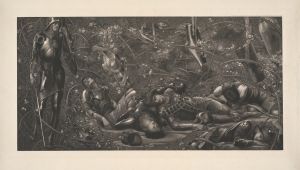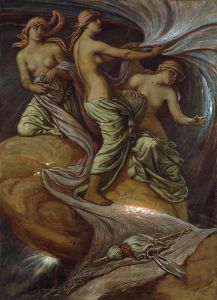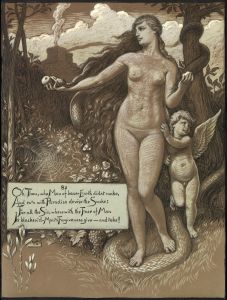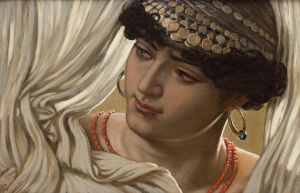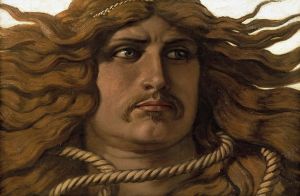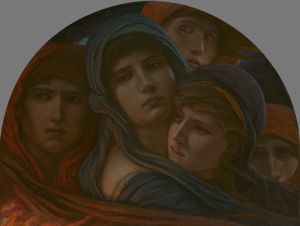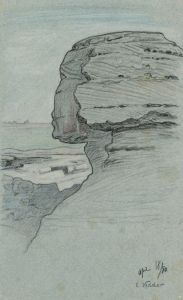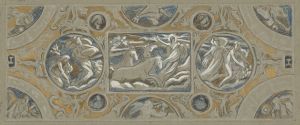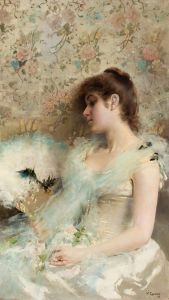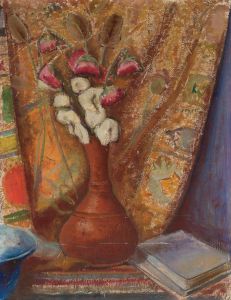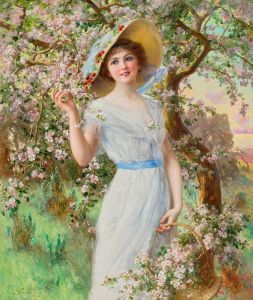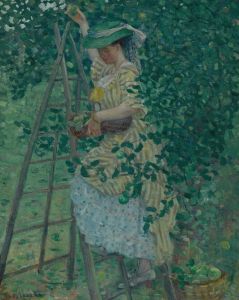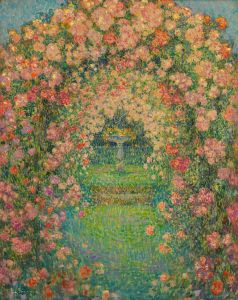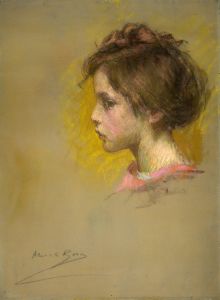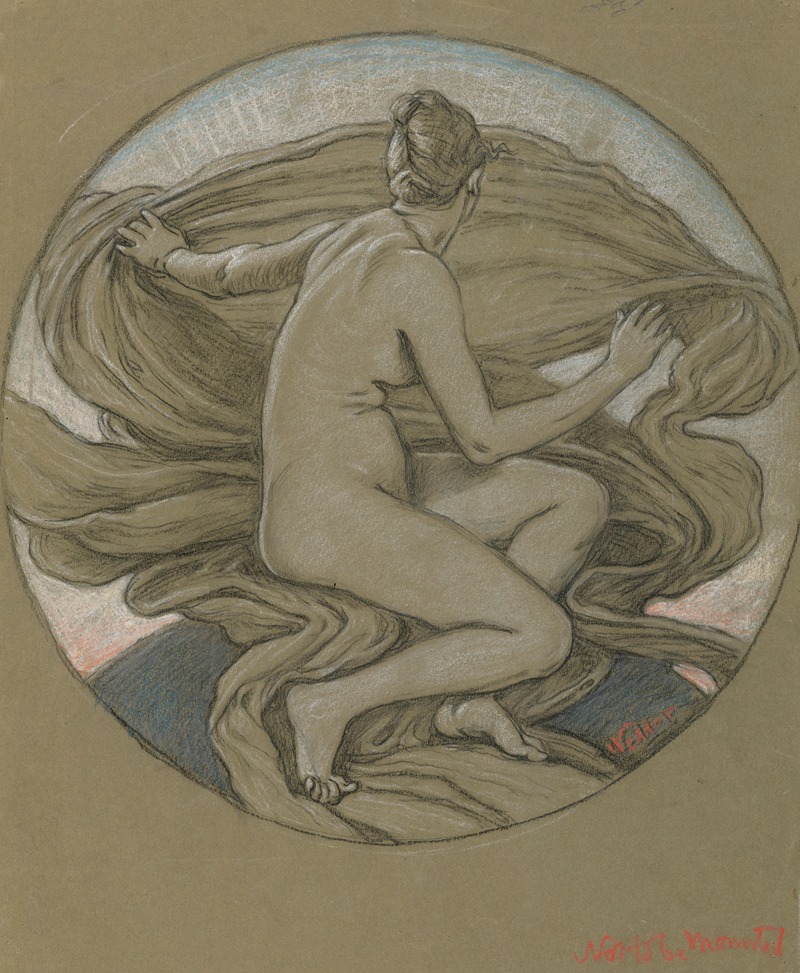
Morning Glory
A hand-painted replica of Elihu Vedder’s masterpiece Morning Glory, meticulously crafted by professional artists to capture the true essence of the original. Each piece is created with museum-quality canvas and rare mineral pigments, carefully painted by experienced artists with delicate brushstrokes and rich, layered colors to perfectly recreate the texture of the original artwork. Unlike machine-printed reproductions, this hand-painted version brings the painting to life, infused with the artist’s emotions and skill in every stroke. Whether for personal collection or home decoration, it instantly elevates the artistic atmosphere of any space.
Elihu Vedder (1836–1923) was an American symbolist painter, book illustrator, and poet, known for his mystical and allegorical works. One of his notable paintings is "Morning Glory," which exemplifies his unique style and thematic interests.
"Morning Glory" was created in 1883, during a period when Vedder was deeply influenced by the Symbolist movement, which sought to express ideas and emotions through symbolic imagery and themes. The painting is an oil on canvas and measures approximately 24 x 20 inches. It is currently housed in the Smithsonian American Art Museum in Washington, D.C.
The painting depicts a young woman in a contemplative pose, surrounded by morning glory flowers. The flowers, known for their rapid growth and ephemeral beauty, often symbolize the fleeting nature of life and the passage of time. This theme is consistent with Vedder's broader body of work, which frequently explores existential and philosophical questions.
In "Morning Glory," Vedder employs a muted color palette, dominated by soft blues, greens, and whites, which enhances the ethereal and dreamlike quality of the scene. The woman's serene expression and the delicate rendering of the flowers contribute to the painting's overall sense of tranquility and introspection.
Vedder's technique in this painting is characterized by meticulous attention to detail and a smooth, almost polished finish. The composition is carefully balanced, with the figure of the woman positioned slightly off-center, creating a harmonious interplay between the human form and the natural elements.
Elihu Vedder's interest in symbolism and allegory was influenced by his extensive travels in Europe and the Middle East, as well as his exposure to various philosophical and literary movements of the time. His work often reflects a synthesis of these diverse influences, resulting in a distinctive and highly personal artistic vision.
"Morning Glory" is a testament to Vedder's ability to convey complex ideas and emotions through his art. The painting invites viewers to reflect on the transient nature of beauty and the deeper meanings that lie beneath the surface of everyday life.
Vedder's contributions to American art extend beyond his paintings. He is also well-known for his illustrations of the Rubáiyát of Omar Khayyám, a collection of quatrains translated by Edward FitzGerald. These illustrations, completed in 1884, are considered some of his most significant works and further demonstrate his skill in blending visual art with literary themes.
In summary, "Morning Glory" by Elihu Vedder is a significant work within the Symbolist movement, showcasing the artist's ability to merge technical skill with profound thematic content. The painting remains an important piece in the collection of the Smithsonian American Art Museum, offering insight into Vedder's artistic legacy and the broader cultural currents of his time.





